
18 minute read
TOURISM WITH KATRINA GEORGE 24. TOURISM
by Focus
month Blend of the
tourism UPDATE tourism UPDATE
Wow, now that was a summer we will never forget! We know that businesses Australia-wide are feeling the eff ects … and will do so for many months to come.
The NSW Government has launched a $10 million rebuild and recover package. Now is the time to be actively involved and embrace these opportunities; it is not the time to wait for visitors to come knocking on your door.
The fi rst phase is a community-driven campaign - “NOW’S THE TIME TO LOVE NSW” - which urges the people of NSW to take a break and to saturate social media with photos or videos of their favourite holiday spots.
Tourism operators, business owners, and Armidale locals can get involved in the campaign by showing the world what’s to love about Armidale.
1. Make your hands into a heart shape.
2. Take a photo at one of your favourite locations … this could be Dangars Gorge, Ebor Falls, The Goldfi sh Bowl, Tattersalls Hotel, Whitebull Hotel, Seesaw Café etc.
3. Share the photo on social media using the hashtag #LoveNSW GET INVOLVED - SHOW THE LOVE, SHARE THE LOVE
New England High Country comes alive in autumn, with a fabulous array of autumn events. Some of the March events include: • What A Relief! It’s Damian Callinan: this free concert and dinner will be held at Wollomombi Hall and Ben Lomond Hall … belly laughs guaranteed! 3rd and 5th March. • Armidale Show: 6th - 7th March. • Armidale Music Foundation Concert: 8th March. • All About Women 2020: Satellite @ NERAM - 8th March. • International Women’s Day Brunch: 8th March. • International Women’s Day @ Echidna Gully: 10th March. • Armidale Cup: 15th March. • Favourite Shorts: 20th - 21st March. • Annual Gem and Craft Show: 21st - 22nd March. • Armidale Street Food Festival: 21st - 22nd March. • Comedy Night 2020: 26th March. • Armidale Twilight Food Markets: 27th March. • Seasons of New England: 28th March. • The Little Mermaid: commences 31st March. Please visit the Armidale Tourism website for further information on these events, as well as other events happening during March.
If you would like the “What’s On” emailed weekly, please join our mailing list by contacting us on tourism@armidale.nsw.gov.au NEW ENGLAND HIGH COUNTRY COMES ALIVE IN AUTUMN, WITH A FABULOUS ARRAY OF AUTUMN EVENTS.
india production in Coff ee
Coff ee production in India is dominated in the hill tracts of South Indian States, with Karnataka accounting for 71%, followed by Kerala with 21% overall production, with 8,200 tonnes.
Indian coffee is said to be the fi nest coffee grown in the shade rather than direct sunlight anywhere in the world. There are about 250,000 coffee growers in the country; 98% of them are small growers. As of 2009, Indian coffee made up just 4.5% of the global production. Almost 80% of Indian coffee is exported; 70% is bound for Europe and the United States, and Italy accounts for 29% of the exports. Coffee is grown in three regions of India, with Karnataka, Kerala and Tamil Nadu forming the traditional coffee growing region. Indian coffee, grown mostly in southern states under monsoon rainfall conditions, is also termed as “Indian monsoonal coffee”. Its fl avour is defi ned as: “The best Indian coffee reaches the fl avour characteristics of Pacifi c coffees, but at its worst it is simply bland and uninspiring”. The fi rst variety that was introduced in the Baba Budan Girir hill ranges of Karnataka in the 17th Century was marketed over the years under the brand names of Kent and S.795.
What does Indian coffee taste like?
A good Indian coffee exhibits characteristics similar to Indonesian coffees, particularly Java Arabica, including a full body yet with an acidity more in line with a good Guatemalan Coffee. The spicy fl avours of a fi ne Indian coffee may include notes of cardamom, clove, pepper and nutmeg and perhaps hints of tropical fruit.
At Daily Ritual we use Indian coffee in some of our exclusive blends. COFFEE IS GROWN IN THREE REGIONS OF INDIA, WITH KARNATAKA, KERALA AND TAMIL NADU FORMING THE TRADITIONAL COFFEE GROWING REGION.



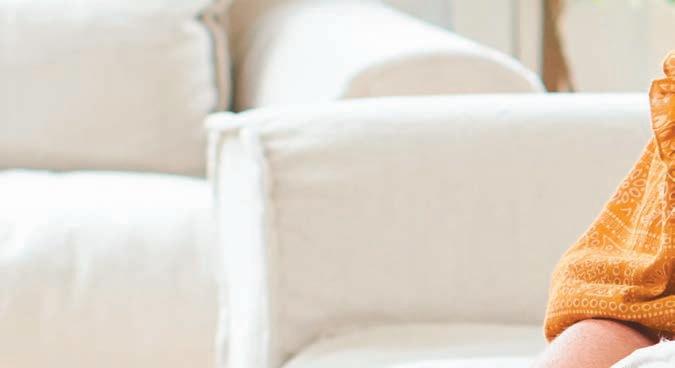

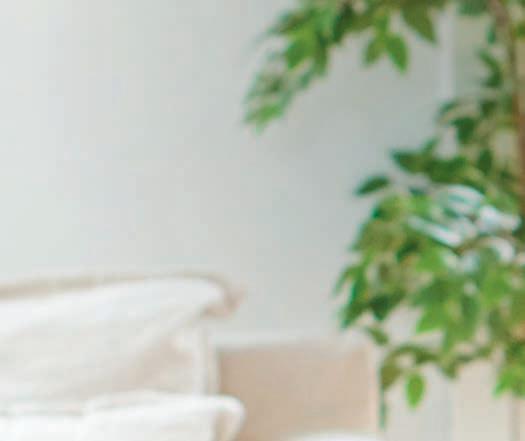



JOANNE Hull

PROPERTIES URALLA HOLLY Goodman


THE GOOD GIFT CO. FOUNDER AND OWNER
Starting from humble beginnings in a little shed, a dream that I backed myself on, has shown that grit, hard work and a lot of determination are the key backbones to success.
Moving forward, we have now relocated to our stunning new office at 1/40 Bridge Street, Uralla. At Properties Uralla, with years of experience in the real estate industry we have a particular focus on service. Our business is unique and our goal is to treat each and every person in a caring and respectful way.
We focus on tenants, landlords, purchasers and vendors alike. All are offered the same high level of service. The ultimate measure of our success is shown by the many clients who keep coming back to us and the high percentage of referrals of friends and family to the business.
Tammy and I would like to continue to offer a dedicated friendly service.

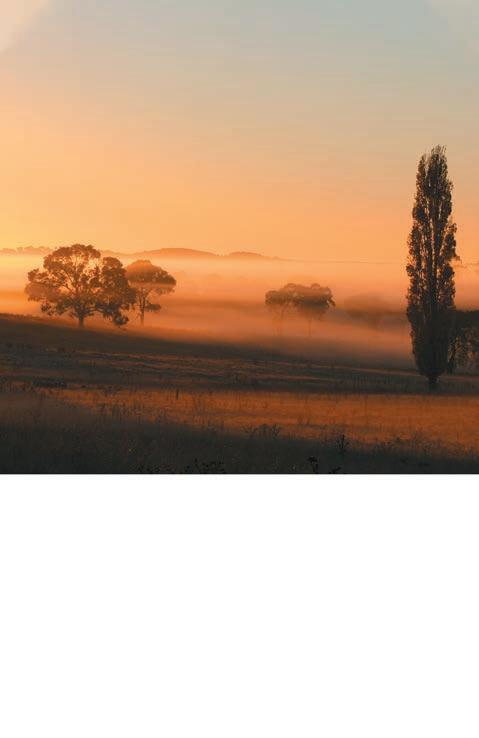
We would both like to thank all our valued clients and all those who have supported us from the very beginning. Best wishes to everyone for a successful 2020. Please introduce yourself and your business.
The Good Gift Co is a premium gifting studio and online store. I am passionate about the gift of giving. I believe that high quality products and presentation leave a lasting impression, and therefore I started the online store to embrace this. What is your business vision for 2020?
I recently designed a basket bag, and these bags are made in Morocco; the leather is hand stamped and packaged in Tamworth. The demand and love for my own bag design has been overwhelming, and as a result of this interest I was receiving many messages about wholesaling. I have now began wholesaling my own products to boutiques around NSW. My vision for 2020 is to continue stocking my products in these beautiful boutiques and aim to get them into more international boutiques. What are your greatest strengths in business?


Based on feedback, I would have to say my attention to detail and customer service. I am a people person, and communicating is something I feel is very important when running a small business.
SHANA & LOUISE


FLIRT ADULT STORE

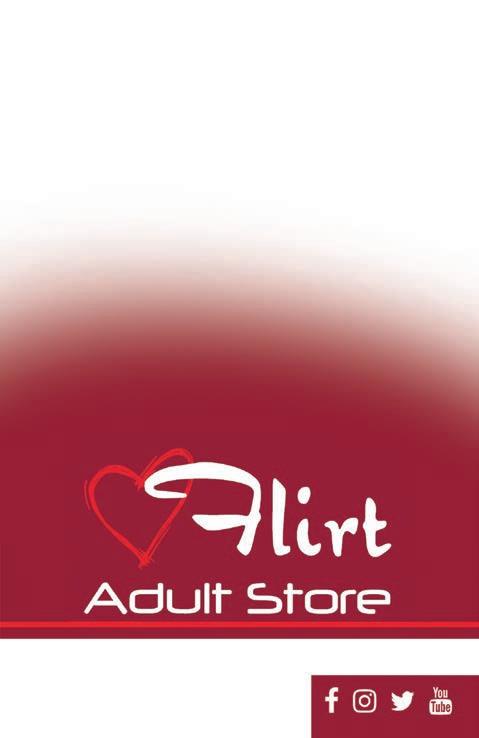
Flirt Adult Store has strived since 2003, expanding from a small business in Bathurst to evolving into eight stores across regional NSW, with our newest store right in the centre of Armidale. Our Armidale team pride themselves on not only developing a positive atmosphere for all customers, erasing the stigma about this ever-expanding industry, but also supporting our local communities and charities. After many years in the Flirt family, Louise has moved to Armidale to lead another amazing store with her colleague Shana; they believe all customers, no matter their gender or orientation are well-informed of our products, and all questions are answered with the highest professionalism. As we have recently opened the doors here in Armidale, we have been met with great feedback elaborating the store’s female-positive outlay, friendly, clean and bright environment. We offer our customers a unique opportunity to join in with our educational workshops held in store throughout the year and daily education within the store with any of our informative staff. To celebrate our opening, we enthusiastically encourage all readers to come in and explore all that we have to offer, or just meet our team! Join our loyalty program and get 10% off your very first purchase!





DR RUTH RAE

Dr Ruth Rae’s family and nursing background led to her research into the role of nurses during WWI: She has published numerous journal articles and several books.
Her works include The History of Australian Nurses in the First World War, a trilogy that includes volumes From Narromine to the Nile, Scarlet Poppies and Veiled Lives. Ruth has also written Tony Windsor’s biography and is currently writing Rose Creal’s biography. The focus of this interview is on some of her more interesting discoveries which related to WWI nursing history. Hi Ruth. What’s your connection to Tamworth?
Once I completed my nurse training in Sydney and started a family, my fi rst husband and I decided we wanted our two daughters to enjoy a rural lifestyle. Tamworth was a great choice, which I have never regretted. Apart from interesting career opportunities in the health sector, we both completed tertiary education courses at UNE. My BA included a double major: Human Bioscience and Politics. I loved politics and completed an MLitt (politics) as well. Where did your interest in nursing history originate?
My mother had some old diaries she would read on ANZAC Day every year. She would have a cry and put them away again. They had belonged to her father, who joined the Australian Lighthorse in 1914 when war was declared and returned four years later: each and every day of his war service he made a diary entry. There were also numerous photographs, letters and postcards.
Sadly, my mother died suddenly when I was 30, but she had given me the collection of diaries etc. a few years earlier. She said that I should have them, as I would value them. This claim became a lifelong mission, and it helped me cope with the loss of my mother. I transcribed the documents via a microfi che fi lm projector, and after fi ve years I had a collection of over half a million words. I donated the original documents to the State Library of NSW (The Fred Tomlins Collection).
It was while transcribing Fred’s words I became aware that his sister, Jessie, was completing her training at Sydney Hospital and planned to join the Australian Army Nursing Service (AANS) when she qualifi ed. Letters between Jessie and her mother indicate Jessie would be well placed to keep an eye on Fred, and later, their younger brother, Will, who also joined the Lighthorse.
I was shocked to realise that Jessie and I both trained under the Nightingale System, but her fi rst post-graduate experience was in a war zone. Nurses have little idea of the outstanding contribution their civilian trained colleagues made during WWI.
In 1996 my husband and I separated and I went to Canberra, where I worked as the Senior Project Offi cer (Divisions of General Practice) with the Consumers’ Health Forum (CHF). During this time I became a PhD candidate at The University of Sydney, with a view to writing Jessie’s experience as a civilian nurse who also served at the 14 AGH in Egypt (1916 - 1919. My thesis was later published as From Narromine to the Nile.
While working with CHF, I undertook consultations about the lack of health services in rural areas, which brought me back to Tamworth for a week; during which time I met my second husband, Rick, and we married within a year. I returned to Tamworth, where I have operated as a freelance historian, researcher and writer for these past 23 years. What are some interesting things you learned through your research into nurses who served during WWI?

One of the main issues which struck me was the lack of material about the contribution of nurses during the war in the military books and organisations. It was as if they were never there or if they were, it was a perfunctory role. I had to travel to Canberra regularly to access the service records of Jessie and her colleagues. I also searched for the names of nurses who were missing from the Australian War Memorial Nominal Roll on obelisks, in memorial parks, hospital archives and in the correspondence of nurses who served; identifying 2,470 Australian nurses who served. My research also revealed that these qualifi ed nurses were extremely well educated and politically astute women at this time. Nursing was a sought after profession for women in the late 1800s and early 1900s. Women had limited choices: marriage, a governess or Lady’s companion. Nursing at this time and during the war was liberating. During their training they had safe accommodation (nurses’ home); a course of study resulting in professional qualifi cation; opportunities to travel and gain safe and interesting work around the world; a small but secure income. Once qualifi ed they could join the AANS and be sent to far-fl ung corners of the world, such as India, Egypt, Europe and England while chaperoned by their matron.
I am writing a biography of Jessie’s matron, Rose Creal, who was an extraordinary woman. Her life as a civilian matron at Sydney Hospital and then later as matron of 14 AGH, Egypt provided a real insight into the different roles and responsibilities of the nurse leaders in war and peacetime. What surprised you about the roles the nurses played during WWI?
I was stunned to learn that twenty Australian nurses were taught how to administer anaesthetics in fi eld hospitals on the western front. They were chosen by an American Unit to undergo training, and they continued to work unsupervised during the war. It must have been so diffi cult to return to civilian nursing, where they were not allowed to take a blood pressure.
The nurse leaders were forward thinkers. Jane Bell, matron at (Royal) Melbourne Hospital, insisted that her nurses be allowed to observe surgery on male patients, and this was introduced into the curriculum in the early 1900s. Up until this time, nurses, being unmarried women, were not permitted to observe the male body. Tragically, they observed many damaged male bodies during the war. What future projects do you have planned? Presently the Rose Creal biography occupies my professional life.
I love that HSC students are considering the First World War from more diverse aspects, and I love to give students information about nurses’ experiences.
Otherwise, I am working on a memorial to Australian nurses who served in Greece, giving lectures and responding to requests from families of nurses. Thanks Ruth. My research also revealed that these qualifi ed nurses were extremely well educated and politically astute women at this time. Nursing was a sought after profession for women in the late 1800s and early 1900s.
With the help of other great people, over the last eight years we have raised $190,636 for Ronald McDonald House and $10,000 for Motor Neuron Disease. With the help of other great people, over the last eight years we have raised $190,636 for Ronald McDonald House and $10,000 for Motor Neuron Disease.

HEIDI MANNING
Please introduce yourself and your business. Heidi - 2 Creative Media. I grew up in a European family environment; they knew how to work hard, challenge the normal and constantly look for new opportunities. My father started his own joinery business in the ‘70s from the ground up, so being in business was in my blood. After high school I moved to Sydney and Newcastle to study, but after meeting a Scotsman who soon became my husband 20 years ago, this brought us back to Tamworth. I worked with start-up businesses and managed others before 2 Creative Media was conceived in 2006. My business grew quickly into an award-winning creative, marketing, digital agency, along with adding two children into the mix, who are now 11 and 9. What is your business vision for 2020? 2020 is the year of the customer. In marketing we are no longer trying to convince people to buy from our businesses or work with us; instead, the priority is around developing memorable customer experiences, so they keep coming back for more and tell others. Whilst technology has enabled us in business and personally, it doesn’t dominate. I believe to succeed in 2020, we’re having to think beyond what we’re doing and link everything back to the “why” we’re doing it. How does your business adapt to changing market conditions? I’d like to think easily. Our business model is agile and we are always researching industry trends for us, as well as our clients. Our systems are fl exible and our approach is always creative. Being a service based agency, we are always reviewing our Servicescape blueprint and making modifi cations based on our customers’ changing needs. What are your greatest strengths in business? My ability to innovate well in advance or to foresee opportunities where no one is looking. I’m excited when changes occur, even when they might initially seem uncomfortable or an “I didn’t see that coming” moment. It’s the chance you get to modify the path that could provide a long term positive outcome. Tell us about your involvement in the local community. With the help of other great people, over the last eight years we have raised $190,636 for Ronald McDonald House and $10,000 for Motor Neurone Disease (MND). However, my private and personal involvement comes down to the basics - stop and spend time with people in need who are right in front of you, the person in the street who you don’t know, or provide a stranger in need with food or money. What are your tips for maintaining a balanced lifestyle with work, home and self? Is that a furphy? Like so many other women in business, I’ve been to my fair share of courses and seminars on this topic over the years and still I fall short of this, but here are my tips anyway: switch on when you have to, and switch off when you can. When you’re at work, you’re all in and when you’re at home, it’s sacred. Make time to be good to yourself without feeling guilty, stay fi t physically and mentally and lastly, have a good time doing it. If you were down to your last $20, how would you spend it? On a picnic with my three favourite people (husband and two children) talking about how we could work together to earn another $20 each. Some of the best ideas come when you’ve hit rock bottom and from the bottom the only way is up. How do we fi nd you? 291 Marius Street, Tamworth, NSW or at www.2creativemedia.com.au 2 CREATIVE MEDIA - DIRECTOR

ERIN and KARLIE
PROFESSIONALS TAMWORTH
Please introduce yourself and your business. Hi, we are Erin and Karlie; we are a young and diverse real estate partnership. We work under the banner of Professionals Tamworth, which is a locally owned and operated agency. What is your business vision for 2020? To help as many people as possible in our community achieve their real estate goals, and to know that we have made the process of buying or selling just that little bit easier and enjoyable. What are your greatest strengths in business? Getting the job done; we pride ourselves on setting a goal and knocking it out of the park. Honesty, reliability, trust and approachability are our greatest strengths we

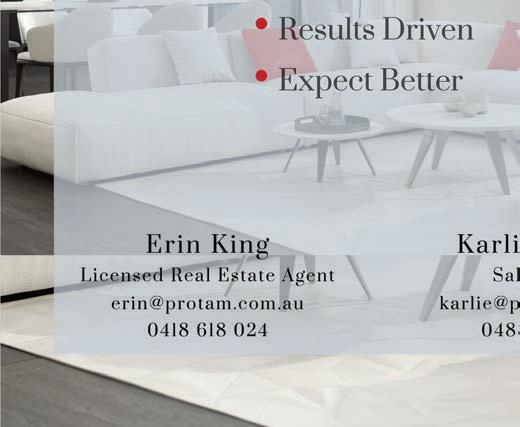
have in our partnership. What are your tips for maintaining a balanced lifestyle with work, home and self? The best tip is to work together. Being in a partnership allows us to have the fl exibility and balance between work and home life. Erin has two kids, and knowing she has Karlie beside her allows her the time to spend with them on the weekends, and that in turn allows Karlie to take time during the week to unwind and balance out when needed - especially now she is renovating her newly purchased home. Working as a team enables us to support and empower each other to always be growing and striving harder.






